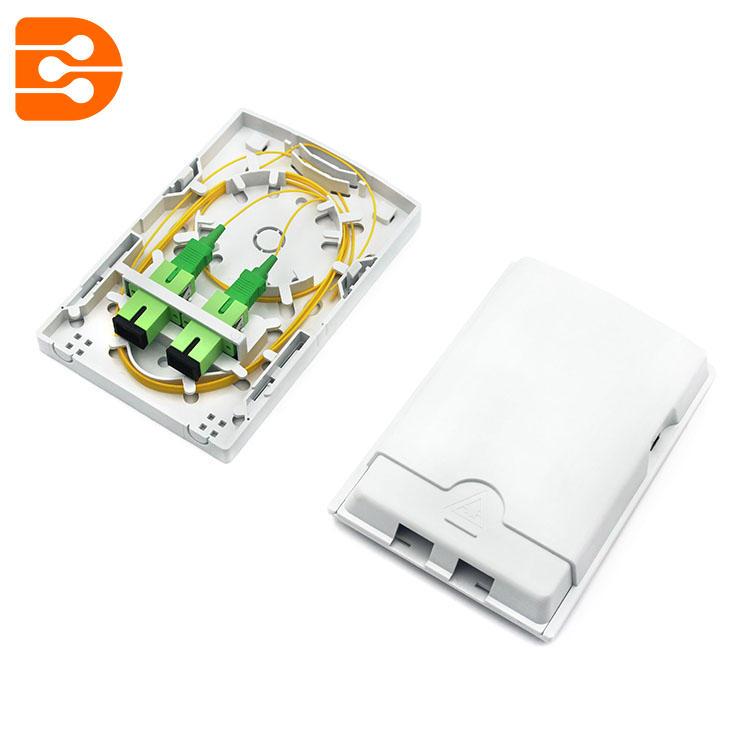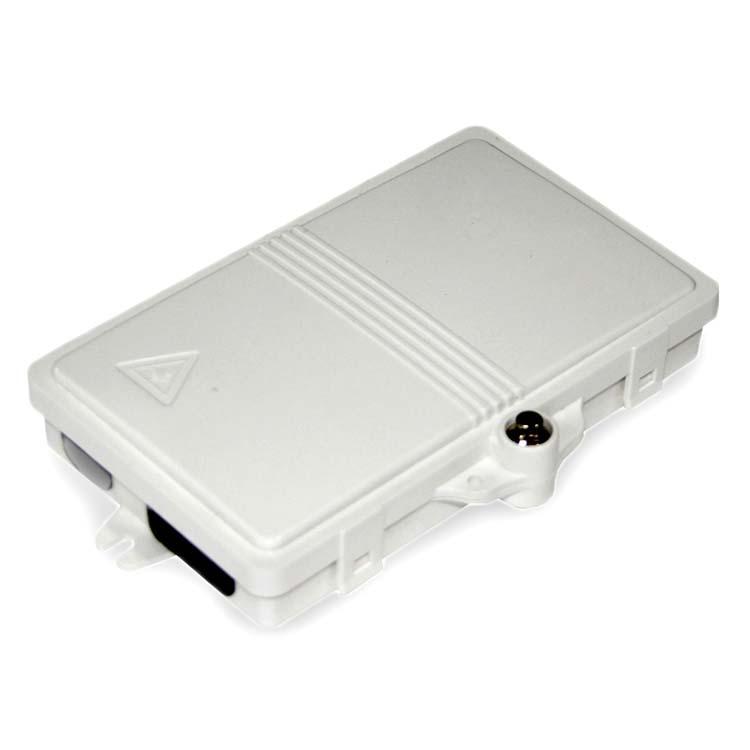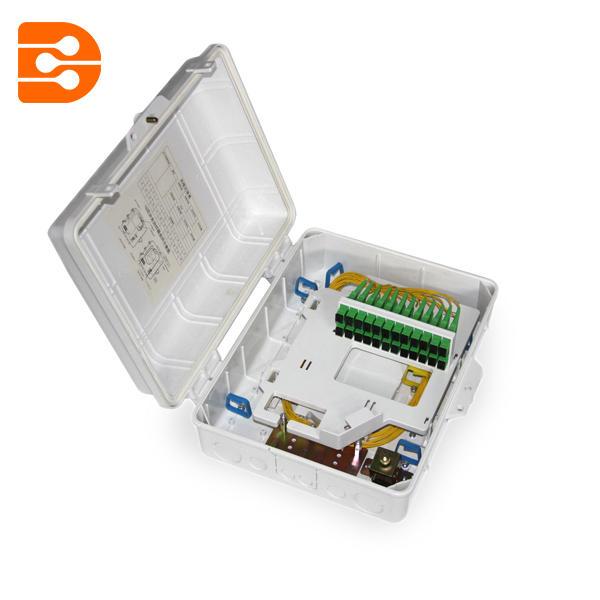
A Fiber Optic Wall Box acts like a superhero shield for indoor fiber cables. It keeps cables neat and safe from dust, pets, and clumsy hands. This clever box also helps maintain strong signal quality by reducing risks from environmental exposure, poor cable management, and accidental damage.
Key Takeaways
- A Fiber Optic Wall Box protects fiber cables from dust and damage by sealing connections inside a strong, dust-proof enclosure, which keeps signals clear and reliable.
- Organized cable management inside the wall box prevents tangles and makes maintenance easier, saving time and reducing the need for frequent cleaning.
- Using a Fiber Optic Wall Box extends the life of fiber equipment by shielding cables from bumps and moisture, helping users enjoy faster, more stable internet for longer.
Fiber Optic Wall Box and Dust Problems in Indoor Setups
Impact of Dust on Fiber Optic Performance
Dust might look harmless, but it acts like a sneaky villain in fiber optic setups. Even a tiny dust particle can block the light traveling through the fiber, causing signal loss, weird reflections, and high error rates. Here’s what dust does to fiber optics:
- Dust particles stick to fiber connectors because of static electricity from wiping or handling.
- A single speck on the fiber core can mess up the signal and even scratch the end-face.
- Dust can travel from one connector to another, spreading trouble everywhere.
- Most fiber link failures—about 85%—happen because of dirty connectors.
Regular cleaning and inspection keep these problems away, but dust never takes a day off!
Signal Loss and Maintenance Challenges
Technicians face a real challenge when dust sneaks into fiber connectors. Dust hides in the tiniest places, invisible to the naked eye. It blocks the fiber core, causing signal loss and back reflections. Sometimes, it even leaves permanent scratches. Here’s a quick look at the headaches dust brings:
| Maintenance Challenge | Cause/Description | Impact on Setup | Technician Action |
|---|---|---|---|
| Skipping cleaning | Dust left on connectors | Signal loss, damage | Clean and inspect every time |
| Dust from reused caps | Contaminants transferred during connector mating | High attenuation, costly repairs | Clean both connectors before connecting |
| Rushed terminations | Dust and oil from improper handling | High insertion loss, reliability issues | Use correct tools and polish properly |
Technicians must clean, inspect, and repeat—like a superhero routine—to keep the network running smoothly.
Common Indoor Dust Sources
Dust comes from everywhere indoors. It floats in the air, hides on clothes, and even sneaks in from protective caps. Here are some common sources:
- Airborne dust and dirt
- Fibers from clothing or carpets
- Body oils from fingers
- Residue from gels or lubricants
- Old or reused dust caps
Even in a clean room, dust can settle on connectors if no one pays attention. That’s why a Fiber Optic Wall Box helps by sealing connections away from these everyday dust monsters.
How Fiber Optic Wall Box Prevents Dust Issues

Sealed Enclosure Features
A Fiber Optic Wall Box acts like a fortress for fiber cables. Its sealed enclosure keeps dust out and the signal strong. The box uses clever features to block even the tiniest dust particles. Take a look at what makes this possible:
| Feature | Description |
|---|---|
| IP65-rated enclosure | Keeps dust out completely, so nothing sneaks in. |
| Sealing gaskets | Stops dust and water from entering through tiny gaps. |
| Durable PC+ABS material | Stands up to dust, moisture, and bumps, keeping the inside safe. |
| Fully enclosed structure | Creates a clean, protected space for fiber connections. |
| UV-stabilized materials | Stops sunlight from breaking down the box and letting dust in. |
| Mechanical seals and adapters | Adds extra barriers to keep dust and water away from the cables. |
Sealed enclosures beat open setups every time. Open setups let dust float in and settle on connectors. Sealed boxes, on the other hand, use rubberized seals and tough plastic shells. These features keep the inside clean and dry, even if the outside gets messy. Industry standards like IP65 make sure these boxes can handle dust and water, so fiber connections stay reliable.
Tip: Always check the seals and gaskets before closing the box. A tight seal means no dust gets in!
Cable Management and Secure Ports
Inside a Fiber Optic Wall Box, cables don’t just sit in a tangled mess. They follow neat paths and stay in place. Organized cable management keeps fibers safe from damage and makes cleaning easy. When cables are tidy, dust has fewer places to hide.
Proper cable management does more than look good. It helps technicians spot problems fast and keeps the signal clear. Secure ports and adapters hold cables tight, so dust can’t sneak in through loose ends. Here’s how secure ports help:
- Rubber grommets at cable entry points block dust from slipping inside.
- Tight door closures and latches keep the box shut, even if someone bumps it.
- Cable clamps and organized layouts protect fiber connections from dust and damage.
Neat cables and secure ports mean less dust, fewer problems, and happier technicians.
Protective Design for Indoor Environments
A Fiber Optic Wall Box doesn’t just fight dust. It stands up to all sorts of indoor challenges. Its compact design fits in tight spaces, so it hides away without getting in the way. The box uses strong plastic or metal to handle bumps and knocks. Some boxes even have flame-retardant materials for extra safety.
Check out these protective features:
| Protective Design Feature | Description and Indoor Environmental Challenge Addressed |
|---|---|
| Compact and low-profile design | Fits anywhere indoors, saving space and staying out of sight |
| Metal or plastic materials | Tough enough to handle drops and bumps; some plastics resist fire |
| IP rating (IP55 to IP65) | Blocks dust and water, perfect for busy indoor spaces |
| Tamper-proof options | Stops curious hands from opening the box |
| Integrated bend radius protection | Keeps fibers from bending too much and breaking |
| Clear internal cable routing | Makes installation easy and prevents mistakes |
| Lockable doors | Adds security and keeps the box closed tight |
| Fiber patch adaptors and splicing capabilities | Keeps connections organized and protected |
Strong materials like ABS and PC plastics give the box its toughness. Rubber and silicone seals add extra dust protection. These features work together to keep fiber connections safe from dust, moisture, and accidents. The result? A Fiber Optic Wall Box that keeps indoor networks running smoothly, no matter what.
Benefits of Using a Fiber Optic Wall Box

Enhanced Signal Quality
A Fiber Optic Wall Box acts like a bodyguard for fiber cables. It keeps dust, dirt, and curious fingers away from the delicate connectors. This protection means the light inside the fiber can travel without interruption. When the signal stays clean, internet speeds stay fast and videos stream without annoying pauses. People notice fewer glitches and enjoy smoother connections.
Lower Maintenance Requirements
Nobody likes cleaning up a mess, especially when it comes to tangled cables and dusty connectors. With a wall box, cables stay organized and protected. Technicians spend less time cleaning and more time doing important work. The box’s sealed design keeps out dust, so connectors need less frequent cleaning. This means fewer service calls and less hassle for everyone.
Extended Equipment Lifespan
Fiber cables and connectors last longer when they stay safe inside a sturdy enclosure. The box shields them from bumps, moisture, and accidental tugs. Protected cables don’t wear out as quickly, so families and businesses save money on replacements. The box’s tough shell helps everything inside stay in top shape for years.
Simplified Troubleshooting
Troubleshooting becomes a breeze with a well-organized wall box. Technicians can spot problems quickly and fix them without digging through a jungle of wires.
- Internal organization with splice trays and connectors reduces clutter.
- The sturdy enclosure protects cables from damage and moisture.
- Easy access lets technicians inspect and repair cables fast.
- Quick connectors and adapters make replacements simple.
Here’s a look at how organization affects fault diagnosis time:
| Aspect | Impact on Fault Diagnosis Time |
|---|---|
| Space-saving design | Helps technicians find faults faster by reducing clutter. |
| Protection of cables | Prevents damage, so fewer faults and quicker fixes. |
| Scalability | Allows easy expansion and keeps things tidy for fast checks. |
| Proper labeling | Makes it easy to identify connections and solve issues quickly. |
| Numbered splice trays | Speeds up finding the right cable during repairs. |
Tip: A neat and labeled wall box saves time and keeps everyone smiling!
A Fiber Optic Wall Box turns chaos into order. It keeps cables safe, clean, and ready for action. Network experts love its organized design, easy access, and strong protection. People who want fast, reliable internet at home or work find this box a smart and simple upgrade.
FAQ
How does a fiber optic wall box keep dust away?
The box acts like a superhero’s shield. It seals fiber connections inside, blocking dust and keeping signals strong.
Can someone install a fiber optic wall box without special tools?
Yes! The box uses a clip-lock design. Anyone can snap it shut and mount it easily. No fancy gadgets needed.
What happens if a fiber cable bends too much inside the box?
The box uses bend protection. It stops cables from twisting like pretzels, keeping them safe and happy.
Tip: Always check the cable paths before closing the box. Happy cables mean happy internet!
Post time: Aug-21-2025
